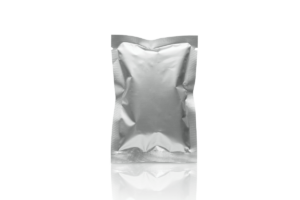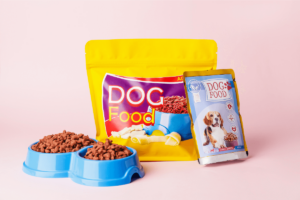

About the Author:
CEO at AlFiPa, responsible for operations as well as purchasing and sales. He is the primary contact for orders and deliveries within the company.
The ability to be stored and ensuring durability before the package is first opened are key functions of pet food packaging.
Legal provisions focus on feed and food safety. For instance, the feed hygiene regulations from Regulation (EC) No. 183/2005 of the European Parliament stipulate that pet food packaging should prevent contamination and pollution of the feed. Additionally, the packaging material itself must not dangerously contaminate the pet food. Thus, the regulations regarding feed packaging are consistent with those for packaging food intended for human consumption.
How does packaging affect the freshness of pet food?
Besides acting as a barrier against external factors, such as moisture, light, and oxygen, protecting against the loss of aroma is crucial when packaging pet food. Especially dogs, with their acute sense of smell, can detect changes in food aroma and may reject their food long before humans notice any spoilage.
Furthermore, pet food packaging must be resistant to bites to prevent animals from damaging it.
Additionally, the consistency of the contents (dry food, wet food, liquid food) dictates the material and type of pet food packaging. Notably, treat pouches should also be consumer-friendly.
This regulation stipulates that pet food packaging must prevent contamination and adulteration of the feed.
Packaging of dry pet food

Packaging for dry food, bird food and fish food offers practical and hygienic solutions for animal lovers. This versatile packaging preserves the freshness and quality of the feed while facilitating storage and transport. From airtight bags to resealable containers, they are essential for keeping our feathered and swimming friends well fed and happy.
The best packaging material for dry pet food involves composite films (duplex films, triplex films, often multi-coated). These are made into convenient stand-up pouches (Doypacks) or box-shaped flat-bottom pouches that are easily stackable. For packing large quantities of dry food, metallized PET films are suitable,as they are particularly tear-resistant and less prone to wrinkling than aluminum foil. However, there is a risk of mite infestation in opened dry food packages, which is why a zip-lock is essential for protection against pests.
For smaller packages, pure plastic or aluminum pouches are advisable. Recyclable mono-films are considered environmentally friendly pet food packaging, as are paper bags, though they are heavier than composite film packaging. Square paper boxes are space-saving for storage. The necessary barrier properties and high tear resistance are achieved through coating.
Packaging of semi-moist food
Chunks, kibbles, or soft pellets can spoil quickly due to their high moisture content, which is why they are packed in small quantities so that the contents are used up quickly after opening.
To retain its moisture and flavor, semi-moist food requires an airtight package specifically designed for optimal moisture preservation. Stand-up and flat pouches are used. Since the barrier protection must function in both directions, multi-layer composite films made of aluminum, PE, or PET are utilized.
Packaging of wet pet food

With their excellent resistance to moisture and oxygen, aluminium bags offer a reliable solution for the long-term storage of products. Their light weight and flexibility make them particularly practical for transport and storage on the move.
During production, the raw materials are cooked right in the packaging, necessitating heat-resistant packaging material.
An alternative to tinplate cans, which are relatively heavy and inconvenient for storage, includes pouches made from aluminum and metallized PET film (PETmet)
Clip film packaging benefits from the advantages of composite films for wet food. These plastic casings, formed into film sausages with metal or plastic clips, are composite films made of aluminum, PE, or PET. They are lightweight, require less material than cans, and guarantee a shelf life ranging from several months to a few years
Packaging of liquid pet food and supplements
Cat milk, dog smoothies, and liquid dietary supplements contain essential nutrients, vitamins, or minerals sensitive to light, oxygen, and high temperatures. Their packaging must ensure high barrier effectiveness and be firm and stable due to the liquid content.
Liquid pet food is packaged in pouches made of aluminum, metallized PET film (PETmet) or composite film Milk snacks are also available in small PETmet capsules sealed with PE or aluminum foil. Alternatively, PET bottles with a sealing foil are used.
Packaging of treats

Packaging pet food in aluminium bags combines durability with an excellent barrier function to preserve the nutrients and flavour of the food. This type of packaging offers an efficient solution for storage and transport by protecting the food from moisture, light and air. Ideal for pet owners who value quality and freshness.
Their packaging must maintain barrier functions for some time even after opening. Therefore, resealable packaging for pet treats is as crucial as high durability and puncture resistance. The package should be easily compressible to fit in a pocket during walks.
Stand-up pouches made from pure plastic, aluminum, or metallized PET film as well as composite films (aluminum, PE, PET, paper) are suitable for dog biscuits or catnip. To preserve aroma and taste, these should be equipped with a press or zip-lock. Flat plastic pouches are also suitable for chew snacks and dog bones.
Aluminum versus plastic: Film is essential for pet food packaging!
From dried treats to wet food portions – food products require packaging precisely tailored to their characteristics. This is the only way to preserve taste and aroma during storage time. How does aluminum foil protect pet food? What are the advantages of plastic packaging? By combining different materials into composite films, packaging can be precisely adapted to the requirement profiles of different types of feed.
Aluminum foils and composite films

The use of metallised PET film provides a first-class barrier against moisture, oxygen and light. These films are ideal for packaging food and other sensitive products, as they preserve their freshness and quality.
Aluminum foils are made by rolling aluminum and are made soft and flexible through heat treatment. For the packaging of pet food, their light, water, fat, and gas-proof properties are utilized. In this way, light and heat are reflected from the surface of the aluminum packaging, and the food retains its moisture.
To further enhance the barrier properties of aluminum or to produce packaging with high rigidity and tear resistance, aluminum foils are coated (extruded) or laminated with other foils to create aluminum composite films. Depending on the ingredients, consistency, or fat content of the food, PE, PP, PET, or paper layers are used.
For less light and heat-sensitive types of food, such as dog muesli or chew bones, plastic is used as the carrier layer for composite films. By applying aluminum to a plastic carrier layer, metallized films are created.
Metallized PET films (PETmet) are a compressible and puncture-resistant solution for treats and pet food that are sensitive to flavor loss. They are also suitable as a sealing medium for liquid pet food.
Among the sustainable solutions for pet food packaging, in addition to the monofilm of aluminum or pure plastic, are pouches or boxes made of recycled paper. These packages are suitable for dried food.
Plastic for pet food packaging

Plastic for pet food packaging offers a reliable and versatile solution for the storage and transport of pet food. With its robust and flexible nature, plastic enables efficient packaging that preserves the freshness and quality of the food. This packaging is a practical choice for pet owners who value convenient and durable packaging solutions.
Air-dried treats, such as pig ears or meat sticks, as well as many dry feeds, are packaged in pure plastic. The material is easily moldable and cost-effective to process. Rigidity and puncture resistance are achieved with appropriate wall thicknesses. Plastic has excellent sealing properties and is easy to weld. It also has good food compatibility and is easily recyclable as a monomaterial.
Plastic is used in solid form (bottles, trays, cups) as well as flexible packaging (covers, pouches). For the packaging of pet food, the classic pouches are mainly used. Treats are packed in gusseted or stand-up pouches with oval-welded bottoms, chew sticks in space-saving flat pouches. For dry food, flat-bottom pouches in rectangular shape are ideal as they make optimal use of storage space.
Polyethylene with low density (PE-LD), which is resistant to fats, is suitable for pet food pouches and sealing films for liquid pet food. Bottles for cat milk are usually made of polyethylene terephthalate (PET). Polypropylene (PP) is used for firmer trays. Blister pack packaging for pet food portion packs consists of polyvinyl chloride (PVC).
Efficient packaging for pet food
With more than 40 years of experience in developing packaging films, AlFiPa’s know-how stands out. We are the competent contact for questions about product developments. Are you looking for sustainable packaging for dog food? Or have you already decided on the printed packaging designs for your premium pet food and just want to optimize the material? We have the solution. Contact us!
